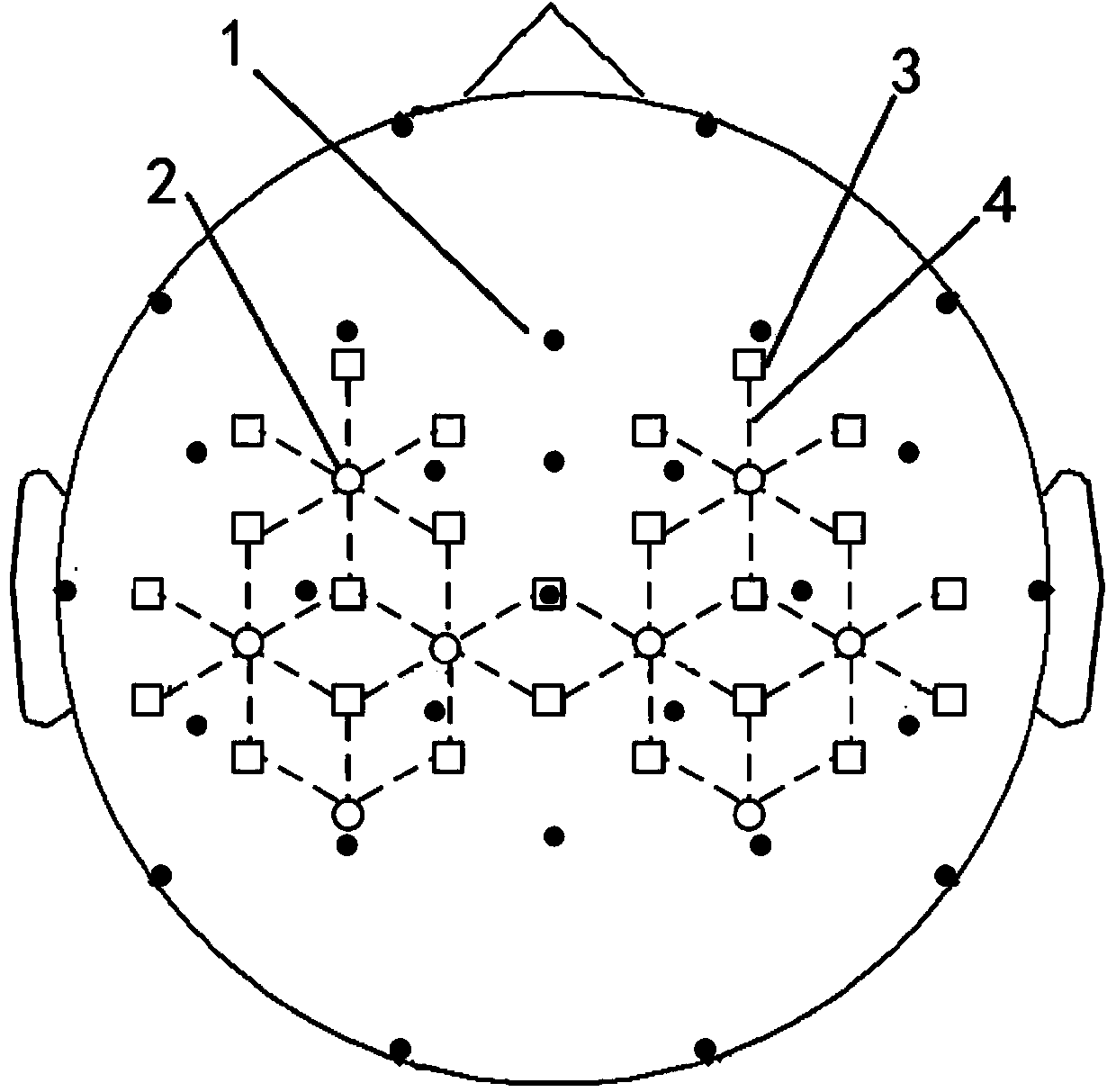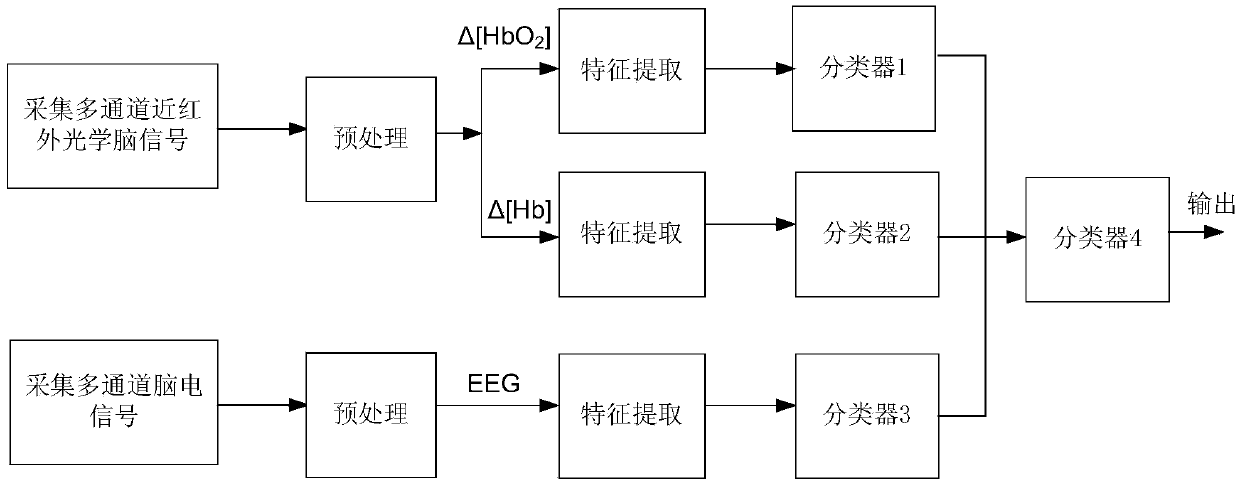BCI (brain-computer interface) method for multi-modal signals
A brain-computer interface and multi-modal technology, applied in the direction of mechanical mode conversion, computer components, user/computer interaction input/output, etc., to achieve the effect of improving accuracy
- Summary
- Abstract
- Description
- Claims
- Application Information
AI Technical Summary
Problems solved by technology
Method used
Image
Examples
Embodiment Construction
[0031] The present invention includes a calibration stage and a recognition stage. When the user starts the calibration and recognition, the user sits directly in front of the task presentation interface of the brain-computer interface, puts a net-shaped brain electrode cap on the head, pushes the hair aside, and uses the near-infrared light source and the probe Fixed on the surface of the scalp and in close contact with the scalp. Such as figure 1As shown, 1 denotes an EEG electrode, 2 denotes a near-infrared light source, 3 denotes a near-infrared probe, and 4 denotes a detection channel composed of a pair of near-infrared light source and probe. In order to ensure that the position of the probe is consistent each time, the EEG electrode Cz on the top of the head shares a position with a near-infrared probe. At this time, the near-infrared probe passes through the center of the ring-shaped EEG electrode, and the rest of the probes and light sources take this as the center S...
PUM
 Login to View More
Login to View More Abstract
Description
Claims
Application Information
 Login to View More
Login to View More - R&D
- Intellectual Property
- Life Sciences
- Materials
- Tech Scout
- Unparalleled Data Quality
- Higher Quality Content
- 60% Fewer Hallucinations
Browse by: Latest US Patents, China's latest patents, Technical Efficacy Thesaurus, Application Domain, Technology Topic, Popular Technical Reports.
© 2025 PatSnap. All rights reserved.Legal|Privacy policy|Modern Slavery Act Transparency Statement|Sitemap|About US| Contact US: help@patsnap.com



